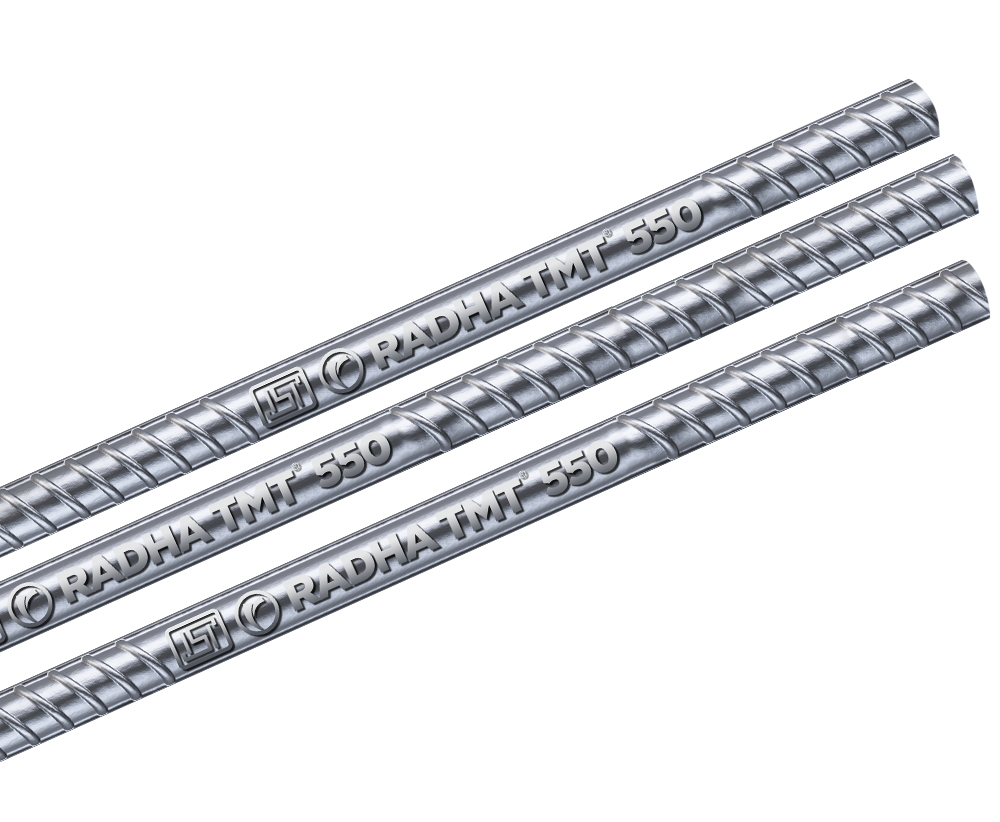
TMT Bar Grades and Their Applications – RADHA TMT
In the world of construction, choosing the right materials is a critical decision that can significantly impact the safety, durability, and cost-effectiveness of a project. Thermo-Mechanically Treated (TMT) bars are one such crucial material. TMT bars come in various grades, each designed to suit specific applications. In this blog, we will explore the different TMT bar grades and their applications, helping you make informed choices for your construction needs.
Understanding TMT Bar Grades
TMT bars are made from high-strength steel and undergo a unique manufacturing process involving controlled heating and cooling. This process imparts specific properties to the bars, making them suitable for different applications. The primary TMT bar grades include:
Fe415
Fe415 is a common grade with a yield strength of 415 N/mm².
Applications: It is suitable for residential construction, such as building homes, apartments, and small commercial buildings.
Fe500
Fe500 is a higher grade with a yield strength of 500 N/mm².
Applications: Fe500 bars are used in a wide range of applications, including large residential and commercial buildings, bridges, and infrastructure projects.
Fe550
The Fe550 bars have a yield strength of 550 N/mm².
Applications: They are preferred for projects requiring higher strength, such as high-rise buildings, industrial structures, and bridges.
Fe600
Fe600 is the highest grade, with a yield strength of 600 N/mm².
Applications: These bars are employed in specialized projects, like industrial heavy-load structures and high-stress applications.
TMT Bar Grades and Their Applications
Fe415 TMT Bars:
Fe415 bars, with their moderate strength, are suitable for low to medium-stress applications. They are commonly used in residential construction, including foundations, columns, beams, and other structural elements. Their ease of handling and cost-effectiveness make them a preferred choice for individual homes, small apartments, and low-rise buildings.
Fe500 TMT Bars:
Fe500 bars are versatile and find application in a wide range of construction projects. Their higher yield strength makes them ideal for large residential complexes, commercial buildings, and infrastructure projects like flyovers and bridges. Fe500 bars offer the right balance of strength and cost-effectiveness, making them a popular choice for many construction scenarios.
Fe550 TMT Bars:
Fe550 bars are a step up in terms of strength and are used in projects that demand enhanced structural stability. High-rise buildings, industrial structures, and critical infrastructure like dams and power plants benefit from the superior strength of Fe550 TMT bars. They offer increased load-bearing capacity and can withstand substantial stress.
Fe600 TMT Bars:
The Fe600 bars are the top-tier TMT bars designed for specialized applications that require exceptional strength and performance. These bars are reserved for projects like heavy industrial structures, skyscrapers, and structures subjected to extreme stress conditions. Their remarkable strength and ductility ensure the structural integrity of these critical constructions.
Conclusion
Choosing the right TMT bar grade is essential for ensuring the safety and durability of a construction project. Matching the grade to the specific application is crucial. Fe415 is ideal for smaller residential buildings, while Fe500 and Fe550 offer versatility for a wide range of applications. For projects demanding the highest level of strength and stability, Fe600 TMT bars are the top choice.
Understanding TMT bar grades and their applications empowers builders and engineers to make informed decisions that align with project requirements. It’s essential to consult with experts and follow local building codes to select the most suitable TMT bar grade, ensuring the success of your construction endeavors.


